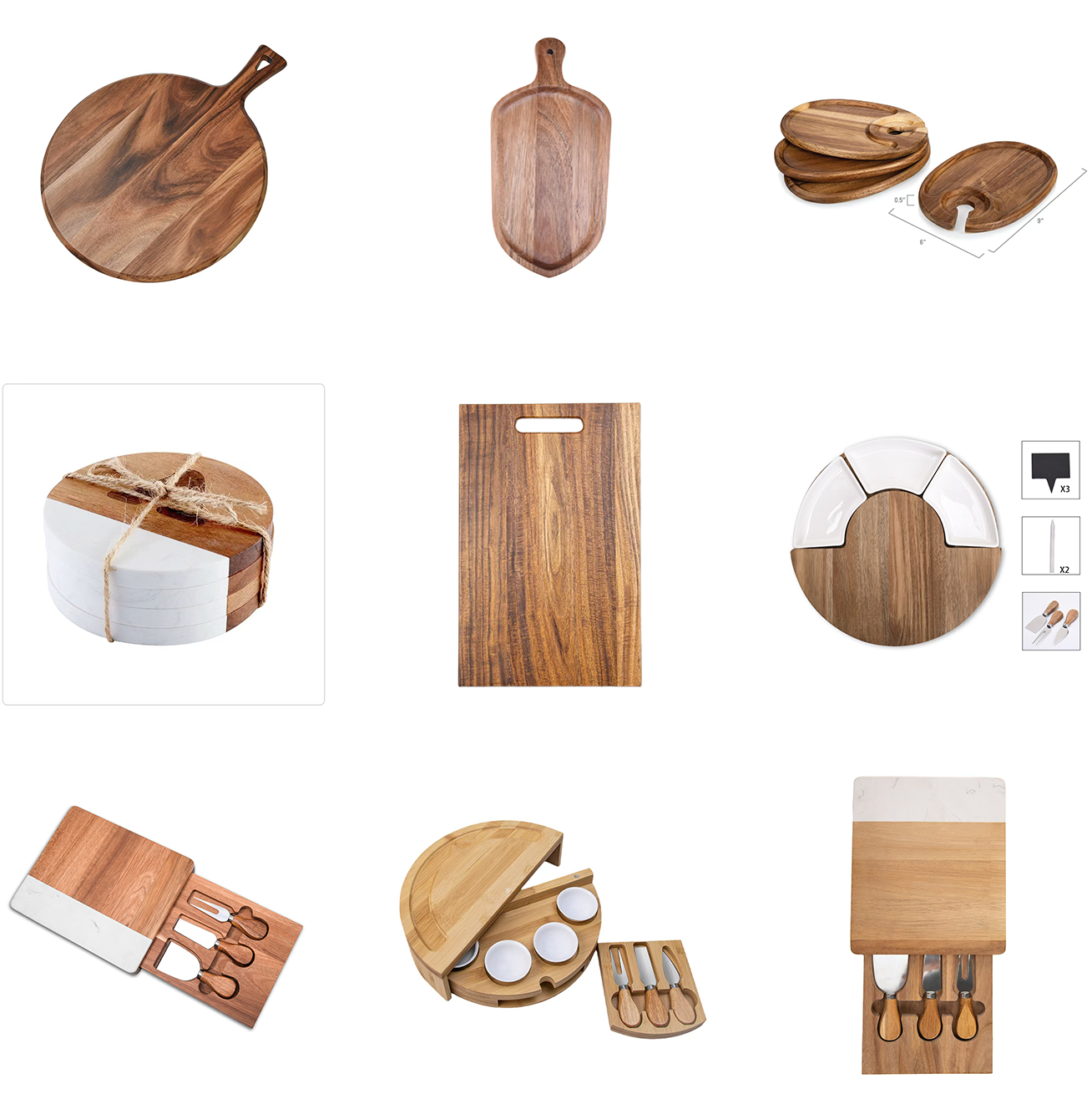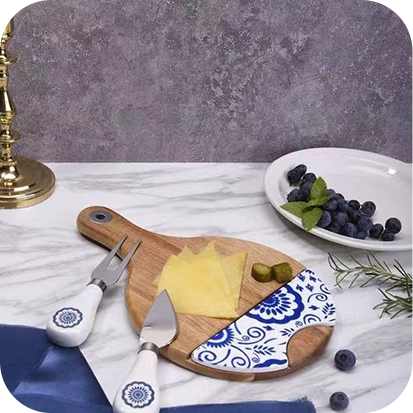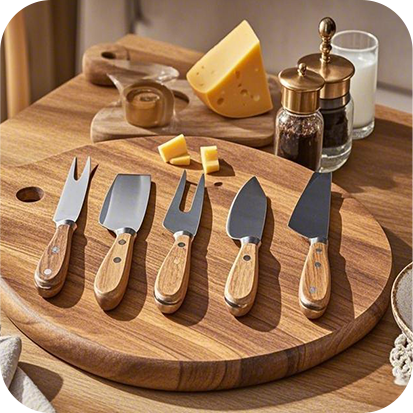Navigating Supplier Relationships for Seamless Wooden Board Imports
Navigating Supplier Relationships for Seamless Wooden Board Imports
Importing Acacia wood products, especially cutting and cheese boards, demands more than basic procurement skills—it requires relationship building, clear communication, and an understanding of both product detail and cultural nuances. This article provides a deeper look into how to structure supplier relationships for successful sourcing, with a focus on quality, compliance, and scalable collaboration.
1. Build Relationships Beyond Transactions
Treat your suppliers as long-term partners rather than one-time vendors. When sourcing products like a Safe for food custom print Acacia wood BBQ chopping board, mutual trust can lead to priority production slots, faster issue resolution, and access to exclusive materials.
Maintain regular communication, share business goals, and consider occasional visits or video tours of facilities to reinforce partnership.
2. Define Compliance from Day One
Suppliers must understand and commit to the certifications and safety standards required for your market. For instance, when sourcing a Biodegradable safe customizable Acacia wood Cheese platter board, define what “biodegradable” means within your regulatory context—certifications, testing protocols, and accepted materials.
Ask for material safety data sheets (MSDS) and compliance documents upfront, and clarify how these will be updated over time.
3. Prioritize Functionality and Practical Testing
Go beyond visual samples—request usability samples. A Cold-safe flexible design Acacia wood Bread cutting board should be tested for performance under refrigeration and moisture cycles. Ask the supplier to simulate use conditions and send video evidence if in-person visits aren’t possible.
Provide written feedback and include it in the next round of spec revisions.
4. Set Up a Sample and Revision Workflow
Not all first samples will be perfect. Establish a documented workflow for prototype approval, revisions, and final sign-off. Be specific about labeling, sizing accuracy, engraving depth, and packaging details.
For example, a Food packaging safe customizable Acacia wood Cheese platter board needs consistent packaging to pass import checks and ensure food safety labeling is legible and accurate.
5. Scale Slowly and Systematically
Begin with a trial order, followed by small-scale production to validate consistency. As reliability increases, scale your orders. Share your volume forecast so your supplier can plan raw material sourcing and labor allocation accordingly.
Introduce new SKUs like a Zero contaminants on-demand production Acacia wood Cheese board only after base product lines prove stable. Always document production tweaks for reference.
6. Negotiate with Empathy, Not Pressure
Price is crucial, but so are trust and quality. When negotiating costs, understand the supplier’s pressure points—labor, shipping, material shortages. Discuss alternatives like flexible delivery schedules, longer payment terms, or shared branding as ways to maintain pricing without pushing quality down.
7. Empower with Clear, Translated SOPs
Standard operating procedures (SOPs) should be clearly documented and, where appropriate, translated into the supplier’s native language. This includes packaging instructions, labeling policies, and rejection criteria.
Well-prepared SOPs reduce dependency on individual staff and ensure continuity across production teams.
8. Address Communication Gaps Proactively
If a supplier is slow to respond or makes repeated mistakes, address it early. Use a problem-resolution framework: state the issue, reference past agreements, request a corrective plan, and set a deadline.
This proactive approach helps maintain the relationship without sacrificing your business objectives.
Seeking a reliable partner for wooden board imports?
Partner with YangJiang Stellar Kitchenware to access food-safe, customizable Acacia wood products built for quality and compliance.
📩 Email: info@justwoodencuttingboard.com
📱 WhatsApp: +86 183 1248 3616
READ MORE:


Yangjiang Cuthaven Kitchenware Co.,Ltd
Yangjiang Cuthaven Kitchenware Co.,Ltd.
specializes in the production and export of high-quality metal and wooden kitchenware. With over 16 years of experience in the industry, we have established ourselves as a trusted partner for businesses worldwide.


















